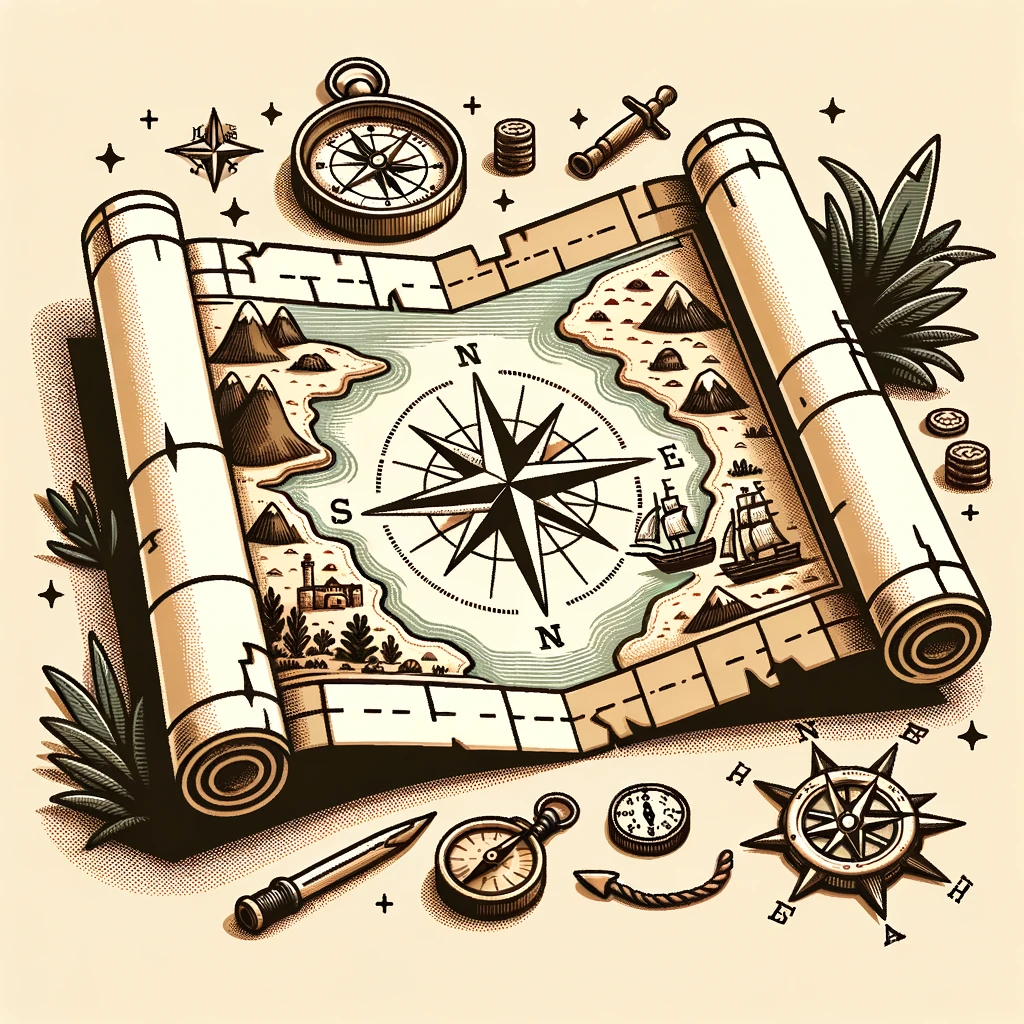Breakthroughs in Space Exploration
In the past few decades, **space exploration** has moved from the realm of science fiction into a tangible reality, transforming our understanding of the cosmos. Thanks to rapid advancements in technology and collaboration between nations and private enterprises, humankind is embarking on a new era in space exploration, marked by groundbreaking discoveries and achievements. This article delves into the most significant advancements in this captivating field.
Introduction
The **pursuit of knowledge** beyond Earth’s atmosphere has always fascinated us. Today, we stand on the brink of an era where space exploration might soon become a routine extension of human civilization. Recent discoveries and innovations have poised us for a future where humanity’s presence extends far beyond our home planet.
Technological Innovations
The cornerstone of advancements in space exploration is unparalleled technological innovation. The tools and methodologies now available have significantly enhanced our capabilities in navigating and understanding space.
**Reusable Rocket Technology**: The advent of reusable rockets, led by companies such as SpaceX and Blue Origin, has drastically reduced the cost of space missions. This innovation allows for multiple missions with the same spacecraft, making space travel more economically viable.
**Advanced Robotic Missions**: Robotic explorers are revolutionizing how we gather data from distant planets. From the rovers on Mars to the probes sent to the outer reaches of our solar system, these robots transmit invaluable insights back to Earth.
**Enhanced Telecommunications**: Innovations in satellite technology have improved our ability to communicate with spacecraft, facilitating more detailed data collection and analysis from deep space missions.
Recent Milestones
The past decade has witnessed some historic milestones in space exploration, signaling new possibilities for future interplanetary ventures.
Milestone
Description
Curiosity Rover
Enabled detailed exploration of Mars’ geology and climate, paving the way for future human exploration.
New Horizons
The first mission to Pluto and the Kuiper Belt, providing first-time close-up images and valuable data.
International Space Station (ISS) Collaborative Efforts
The ISS continues to be a hub for international collaboration, fostering research that benefits both space and Earth-based science.
International Collaboration
One of the most remarkable aspects of the recent upsurge in space exploration is the ***global collaboration***. Countries and private organizations worldwide are joining forces to push the boundaries of our cosmic understanding. This collaborative spirit not only enhances resource utilization but also promotes peace and shared knowledge.
**NASA and ESA Cooperation**: Projects like the James Webb Space Telescope are a testament to what can be achieved when talents from different nations come together for a common cause.
**International Scientific Input**: Many current missions include instruments and experiments from scientists worldwide, allowing diverse scientific perspectives and collaborative advancements.
These collaborations are crucial not only for maximizing scientific outcomes but also for planning ambitious future missions, such as the potential human settlement on Mars. As each partner brings unique expertise and technology to the table, the collective achievements grow exponentially.
Future Prospects
As we look toward the future, the trajectory of space exploration is nothing short of **promising**. The goal is no longer merely to visit other worlds, but to establish a consistent and sustainable human presence beyond Earth. The proposed advancements…
Breakthroughs in Space Explorations
After laying the groundwork in the prior section with a detailed overview of the advancements in propulsion technologies, this part continues the exploration into remarkable achievements and future potentials in space exploration. Humanity’s journey beyond Earth has never been more thrilling, thanks in large part to innovative discoveries and interdisciplinary collaborations.
Innovations Shaping Space Missions
Space exploration is not just about traveling to distant planets; it’s about unveiling the universe’s secrets. Some of the key areas where major breakthroughs are being made include:
Exoplanetary Missions: New detection techniques have led to the discovery of thousands of exoplanets, providing insights into potentially habitable worlds.
Robotic Exploration: Advanced robotics enhance our capability to explore distant terrains, from Mars’ surface to the icy moons of Jupiter.
Quantum Communication: Secure data transmission over astronomical distances is becoming a reality.
Emerging Technologies in Space Exploration
As technologies evolve, their application in space exploration leads to unprecedented discoveries:
AI-powered systems are revolutionizing data analysis from spacecraft ventures, enhancing decision-making processes.
3D printing has the potential to manufacture tools and parts directly in space, revolutionizing long-term space missions.
Breakthroughs in cooling technologies such as cryogenics are integral for managing the extreme temperatures encountered in outer space.
Impact Statistics
Breakthrough
Impact
Exoplanet Discoveries
More than 4,500 confirmed exoplanets found.
Robotic Missions
Millions of miles explored on Mars and other celestial bodies.
AI in Space
20% faster data processing for mission-critical decisions.
Global Collaborations in Space Exploration
International collaborations are at the forefront of space explorations, bridging the gap between nations and fostering a collective approach to cosmic exploration. Some key collaborative milestones include :
International Space Station (ISS): A joint venture involving multiple countries, the ISS serves as a symbol of peaceful cooperation and scientific development.
Mars Rover Missions: Various countries contribute technologies and resources, sharing knowledge and findings for humanity’s benefit.
Artemis Program: With partners like the European Space Agency, this program aims to land the first woman and the next man on the Moon.
Challenges and Their Solutions
As the horizons expand, so do the challenges. Overcoming these requires more than just technological prowess; it demands keen foresight and robust collaborative frameworks. Some critical challenges include:
Deep Space Radiation: Improved protective measures and innovative materials are under development.
Sustaining Human Life: Research into artificial biospheres and resource recycling is gaining traction.
Limitations in Current Propulsion Systems: Breakthroughs in nuclear propulsion are opening new avenues for faster and longer space travel.
Continuing the Journey: Lasting Impact and Future Paths in Space Exploration
In our continued quest to unravel the mysteries of the universe, recent decades have demonstrated that breakthroughs in space exploration are not just fleeting achievements. They are paving the way for a sustainable future beyond Earth. Building on the advances discussed in the previous sections, this part of the article delves further into the lasting impact of these breakthroughs and the potential pathways they open for future exploration.
1. Extending Our Reach: The Era of Deep Space Exploration
The push into deep space has marked a new era where aspirations meet reality. Missions like NASA’s Parker Solar Probe and ESA’s Gaia spacecraft are venturing farther than ever before, diving into the unknown, and bringing back unprecedented amounts of data.
Interstellar Studies: Unique insights into the structure of galaxies and the behavior of celestial phenomena.
Astrobiology: Advanced understanding of potential life-supporting environments on moons and planets in distant star systems.
Technological Bandwidth: Development in propulsion technology and AI-driven spacecraft enhances travel efficiency and data processing.
2. Human Mars Missions: A Dream Being Realized
The transfer from robotic to human exploration of Mars represents one of humanity’s greatest ambitions. With plans solidifying, agencies such as NASA and SpaceX aim to plant the first human footprints on the Martian soil in the coming decades.
Illustrated timeline of Mars mission projections showing key milestones for human exploration.
Robotic Precursors: Essential groundwork through current rovers and orbiters paving the way for human habitation.
Advanced Life Support Systems: Cutting-edge innovation ensures astronauts can thrive in extraterrestrial environments.
Collaboration: International coalitions foster shared technological development, cost reduction, and mission success.
3. The Lunar Gateway: A Staging Point for Exploration
Amidst these lofty goals, the Lunar Gateway project stands as a strategic cornerstone in humanity’s cosmic expansion. Serving as a midway station, it promises not only to sustain lunar operations but also act as an epicenter for deep space missions.
Sustainability:
Extended presence in lunar orbit boosts consistent research opportunities and long-duration mission capabilities.
Resource Utilization:
Maximizing moon resources promotes self-sufficiency and efficiency in resource management.
Scientific Advancement:
New perspectives granted by the Gateway facilitate advances in various fields such as material science and biological research.
4. Overcoming Challenges: The Roadblocks and Solutions
As with all pioneering endeavors, the path forward is beset with challenges. Key obstacles include:
Cosmic Radiation: Innovative shielding solutions are required to protect astronauts from the harsh space environment.
Economic Viability: Efficient funding models and partnerships with private enterprises need strategic alignment.
Technological Limitations: Continuous breakthroughs in propulsion and life support systems are vital to mission success.
“Determination, collaboration, and ingenuity will be our guiding stars as we traverse the unexplored terrains of space” — Space Industry Expert
Conclusion
As we gaze into the cosmos, these breakthroughs are not mere achievements but stepping stones leading us towards a new dawn of discovery and exploration. The persistence of space agencies and private enterprises continues to forge a trail into the frontier beyond Earth, striving to answer fundamental questions about our existence and inspiring generations to come. In the vast void, our aspirations are limitless, and our opportunities, boundless.
List of Action Items or Summary Items
Stay Informed: Follow updates from leading space agencies and organizations involved in space exploration.
Support Space Policy: Engage with policy developments to advocate for sustainable exploration practices.
Education and STEM Promotion: Encourage educational initiatives that push towards careers in STEM fields related to space.
Foster Public-Private Partnerships: Promote collaborations that leverage strengths from both sectors for mutual gains.




